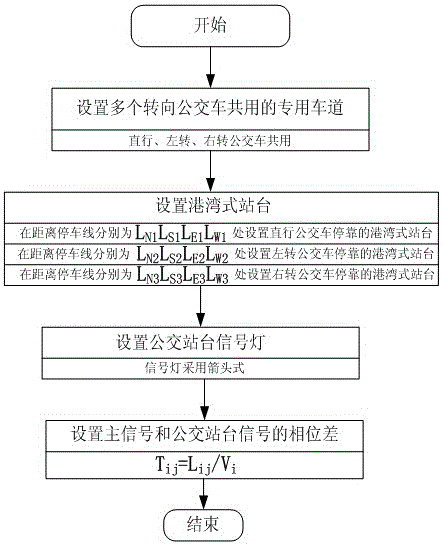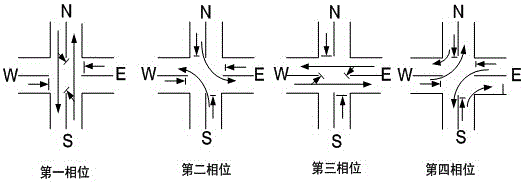Bus priority signal control method based on multi-turn bus shared lane
A shared lane and signal control technology, which is applied in the traffic control system of road vehicles, traffic control systems, roads, etc., can solve the problems of no signal priority and difficulty in realizing bus priority, so as to facilitate the operation of drivers and improve traffic safety Sexuality and the effect of reducing exhaust emissions
- Summary
- Abstract
- Description
- Claims
- Application Information
AI Technical Summary
Problems solved by technology
Method used
Image
Examples
Embodiment Construction
[0018] Such as figure 1 In the shown intersection, the intersection road is divided into four intersections: N (north) intersection, S (south) intersection, W (west) intersection, and E (east) intersection. A multi-turn bus sharing lane 9, 16, 24, 31 is respectively added between the straight going and the right-turn lanes of the entrance roads of these four crossings at the intersection. Among them, the right-turn lane should be extended to the direction of the non-motor vehicle lane.
[0019] Let the east-west (EW) direction be right-turning vehicles without control, and the north-south (SN) direction is right-turning vehicles under control. The present invention refers to the east-west intersection when the right-turning vehicle is not controlled, and refers to the north-south intersection when the right-turning vehicle is controlled.
[0020] Make the signal light in the middle of the intersection the main signal light 1. On the four entrance roads of the intersection, ...
PUM
 Login to View More
Login to View More Abstract
Description
Claims
Application Information
 Login to View More
Login to View More - R&D
- Intellectual Property
- Life Sciences
- Materials
- Tech Scout
- Unparalleled Data Quality
- Higher Quality Content
- 60% Fewer Hallucinations
Browse by: Latest US Patents, China's latest patents, Technical Efficacy Thesaurus, Application Domain, Technology Topic, Popular Technical Reports.
© 2025 PatSnap. All rights reserved.Legal|Privacy policy|Modern Slavery Act Transparency Statement|Sitemap|About US| Contact US: help@patsnap.com



